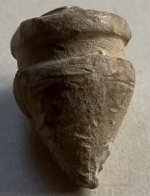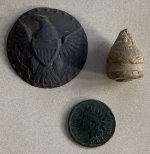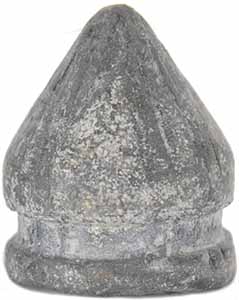HuntinDog
Bronze Member
I know this has been asked a bunch, but I've never dug one of these...
Got out today and had a chance to dig a few targets.
a 1903 Indian
a stamped eagle plate for a tongue and wreath buckle
and this bullet.
It's .56 in dia. and .75 tall.
I don't have anything to weigh it on so that's about all I can add.
Any help ID'n the bullet is appreciated
Thanks
Got out today and had a chance to dig a few targets.
a 1903 Indian
a stamped eagle plate for a tongue and wreath buckle
and this bullet.
It's .56 in dia. and .75 tall.
I don't have anything to weigh it on so that's about all I can add.
Any help ID'n the bullet is appreciated
Thanks
















